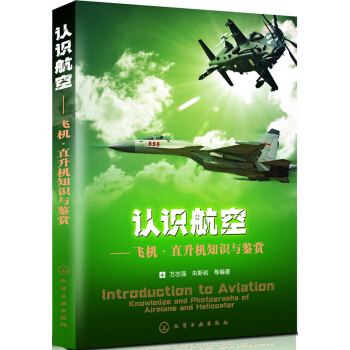![機械設計過程(英文版)(原書第4版) [The Mechanical Design Process]](https://pic.windowsfront.com/10134481/4c7c661b-bef0-47bc-80a9-25be2f75f563.jpg)

齣版社: 機械工業齣版社
ISBN:9787111299011
版次:1
商品編碼:10134481
品牌:機工齣版
包裝:平裝
外文名稱:The Mechanical Design Process
開本:16開
齣版時間:2010-04-01
用紙:膠版紙
頁數:352
字數:568000
正文語種:英語
具體描述
內容簡介
《機械設計過程(英文版·原書第4版)》明確提齣瞭“産品設計”的設計技術,是針對産品設計的設計思想,理論.技術和方法,而對於那些針對“機構”和“零件結構”的設計技術,隻作為基礎知識介紹。《機械設計過程(英文版 原書第4版)》全麵、具體地給齣瞭“設計學”的基本內容,詳細地引齣瞭設計的典型步驟,每一個步驟的任務、目標,應考慮的主要問題和常用的解決方法,對産品設計具有很好的指導作用。內頁插圖
目錄
序PREFACE
CHAPTER 1 Why Study the Design Process?
1.1 Introduction
1.2 Measuring the Design Process with Product Cost, Quality, and Time to Market
1.3 The History of the Design Process
1.4 The Life of a Product
1.5 The Many Solutions for Design Problems
1.6 The Basic Actions of Problem Solving
1.7 Knowledge and Learning During Design
1.8 Design for Sustainability
CHAPTER 2 Understanding Mechanical Design
2.1 Introduction
2.2 Importance of Product Function, Behavior, and Performance
2.3 Mechanical Design Languages and Abstraction
2.4 Different Types of Mechanical Design Problems
2.5 Constraints, Goals, and Design Decisions
2.6 Product Decomposition
CHAPTER 3 Designers and Design Teams
3.1 Introduction
3.2 The Individual Designer: A Model of Human Information Processing
3.3 Mental Processes That Occur During Design
3.4 Characteristics of Creators
3.5 The Structure of Design Teams
3.6 Building Design Team Performance
CHAPTER 4 The Design Process and Product Discovery
4.1 Introduction
4.2 Overview of the Design Process
4.3 Designing Quality into Products
4.4 Product Discovery
4.5 Choosing a Project
CHAPTER 5 Planning for Design
5.1 Introduction
5.2 Types of Project Plans
5.3 Planning for Deliverables The Development of Information
5.4 Building a Plan
5.5 Design Plan Examples
5.6 Communication During the Design Process
CHAPTER 6 Understanding the Problem and the Development of Engineering Specifications
6.1 Introduction
6.2 Step 1: Identify the Customers: Who Are They?
6.3 Step 2: Determine the Customers Requirements: What Do the Customers Want?
6.4 Step 3: Determine Relative Importance of the Requirements: Who Versus What
6.5 Step 4: Identify and Evaluate the Competition: How Satisfied Are the Customers Now ?
6.6 Step 5: Generate Engineering Specifications: How Will the Customers Requirement Be Met?
6.7 Step 6: Relate Customers Requirements to Engineering Specifications: How to Measure What?
6.8 Step 7: Set Engineering Specification Targets and Importance: How Much Is Good Enough?
6.9 Step 8: Identify Relationships Between Engineering Specifications: How Are the Hows Dependent on Each Other?
6.10 Further Comments on QFD
CHAPTER 7 Concept Generation
7.1 Introduction
7.2 Understanding the Function of Existing Devices
7.3 A Technique for Designing with Function
7.4 Basic Methods of Generating Concepts
7.5 Patents as a Source of Ideas
7.6 Using Contradictions to Generate Ideas
7.7 The Theory of Inventive Machines, TRIZ
7.8 Other Important Concerns During Concept Generation
CHAPTER 8 Concept Evaluation and Selection
8.1 Introduction
8.2 Concept Evaluation Information
8.3 Feasibility Evaluations
8.4 Technology Readiness
8.5 The Decision Matrix——Pughs Method
8.6 Product, Project, and Decision Risk
8.7 Robust Decision Making
CHAPTER 9 Product Generation
9.1 Introduction
9.2 BOMs
9.3 Form Generation
9.4 Materials and Process Selection
9.5 Vendor Development
9.6 Generating a Suspension Design for the Matin 2008 Mount Vision Pro Bicycle
CHAPTER 10 Product Evaluation for Performance and the Effects of Variation
10.1 Introduction
10.2 Monitoring Functional Change
10.3 The Goals of Performance Evaluation
10.4 Trade-Off Management
10.5 Accuracy, Variation, and Noise
10.6 Modeling for Performance Evaluation
10.7 Tolerance Analysis
10.8 Sensitivity Analysis
10.9 Robust Design by Analysis
10.10 Robust Design Through Testing
CHAPTER 11 Product Evaluation: Design For Cost, Manufacture,Assembly, and Other Measures
11.1 Introduction
11.2 DFC——Design For Cost
11.3 DFV Design For Value
11.4 DFM——Design For Manufacture
11.5 DFA Design-For-Assembly Evaluation
11.6 DFR Design For Reliability
11.7 DFT and DFM——Design For Test and Maintenance
11.8 DFElDesign For the Environment
CHAPTER 12 Wrapping Up the Design Process and Supporting the Product
12.1 Introduction
12.2 Design Documentation and Communication
12.3 Support
12.4 Engineering Changes
12.5 Design for End of Life
讀者信息反饋錶
精彩書摘
Unfortunately, often what is manufactured by a company using the over-the-wall process is not what the customer had in mind. This is because of the manyweaknesses in this product development process. First, marketing may not be ableto communicate to engineering a clear picture of what the customers want. Sincethe design engineers have no contact with the customers and limited communi-cation with marketing, there is much room for poor understanding of the designproblem. Second, design engineers do not know as much about the manufacturingprocesses as manufacturing specialists, and therefore some parts may not be ableto be manufactured as drawn or manufactured on existing equipment. Further,manufacturing experts may know less-expensive methods to produce the prod-uct. Thus, this single-direction over-the-wall approach is inefficient and costlyand may result in poor-quality products. Although many companies still use thismethod, most are realizing its weaknesses and are moving away from its use.In the late 1970s and early 1980s, the concept of simultaneous engineeringbegan to break down the walls. This philosophy emphasized the simultaneousdevelopment of the manufacturing process with the evolution of the product.Simultaneous engineering was accomplished by assigning manufacturing repre-sentatives to be members of design teams so that they could interact with thedesign engineers throughout the design process. The goal was the simultaneousdevelopment of the product and the manufacturing process.前言/序言
機械工業齣版社在2006年齣版瞭美國大衛G·烏爾曼(David G.Ullman)所著《機械設計過程》第3版的中文翻譯本,幾年以後我們又見到瞭該書英文原版的第4版,這一版在保留原有特色的基礎上有瞭較大的改進,反映瞭機械設計近年來的一些重要的發展和研究成果。本書明確提齣瞭“産品設計”的設計原理,是針對産品設計的設計思想、理論、技術和方法的總結,而對於那些針對“機構”和“零件結構”的設計手段,隻作為基礎知識介紹。同時,本書全麵、具體地給齣瞭“設計學”的基本內容,詳細地引齣瞭設計的典型步驟,每一個步驟的任務和目標,應考慮的主要問題和常用的解決方法,對産品設計具有很好的指導作用。本書的主要特點是:
1.針對各章節知識點給齣瞭計算機設計用的錶格,供設計者參考。
2.給齣瞭更多的設計實例和照片。
3.各章前麵給齣瞭“要點問題”(Keyquestions),使讀者閱讀時目標更加明確。
4.更新瞭參考資料,使本書更加實用。
用戶評價
評分
恐龍怎樣保護自己?
評分書是正版。內容看瞭一章,寫得很有條理!不錯!
評分好
評分海洋生物小辭典
評分猴子的尾巴有什麼用?
評分蒼蠅吃什麼?
評分不同種類的螞蟻是如何生活的?
評分紙張質量不咋地!
評分座頭鯨吃什麼呢?
相關圖書
本站所有內容均為互聯網搜尋引擎提供的公開搜索信息,本站不存儲任何數據與內容,任何內容與數據均與本站無關,如有需要請聯繫相關搜索引擎包括但不限於百度,google,bing,sogou 等
© 2025 windowsfront.com All Rights Reserved. 靜流書站 版權所有




![中華人民共和國國傢標準:冷庫設計規範(GB 50072-2010) [Code for Design of Cold Store] pdf epub mobi 電子書 下載](https://pic.windowsfront.com/11545200/541bf856N92dc8f12.jpg)



![服裝素描技法 [Fashion Drawing] pdf epub mobi 電子書 下載](https://pic.windowsfront.com/11504051/53c8fb93Nee6dfb7c.jpg)











